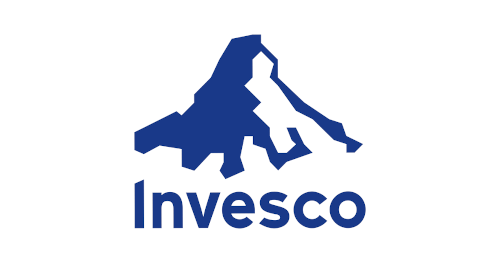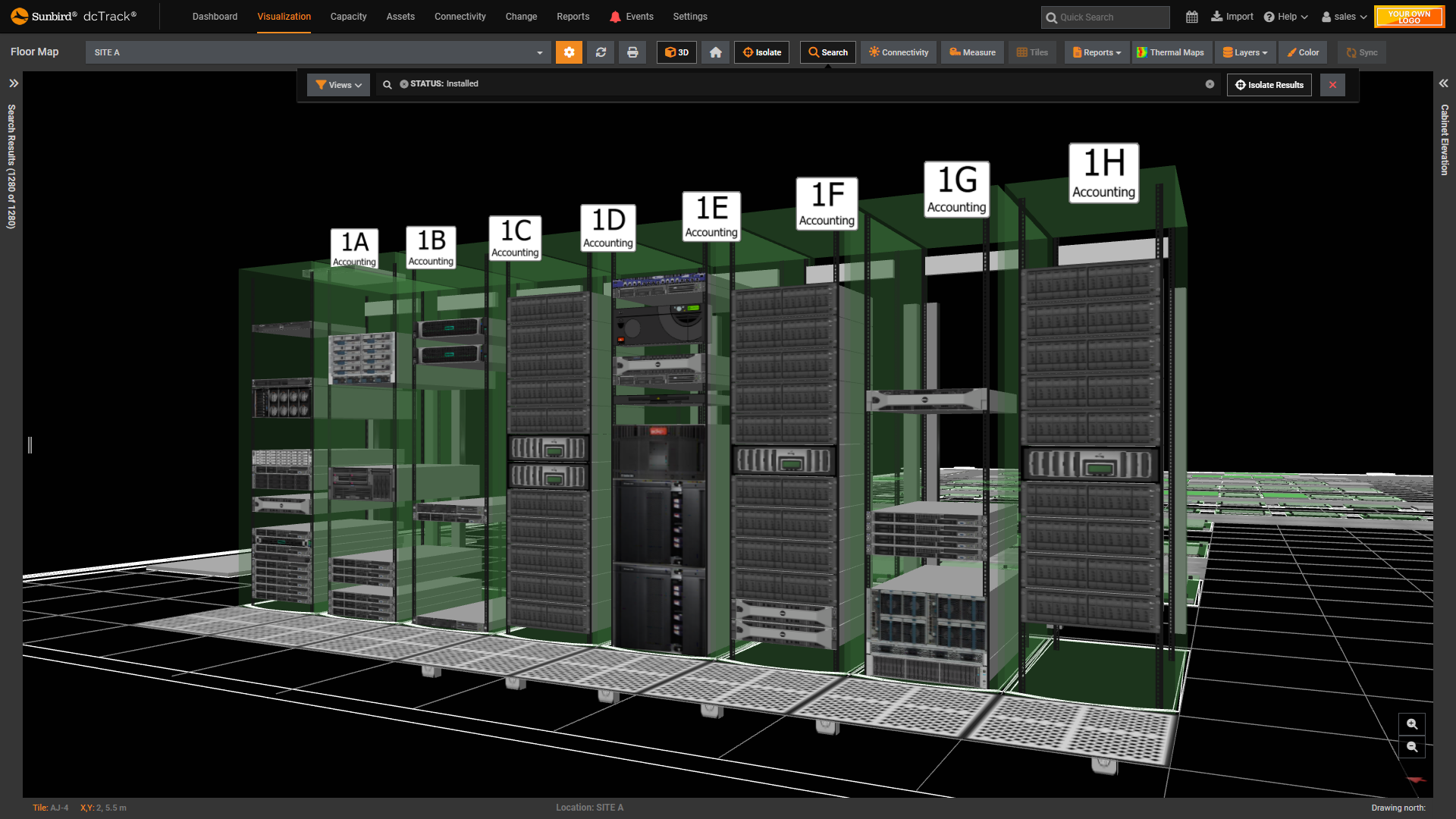Data Center Digital Twin: Modeling, Planning, and Visualization of All Your Sites
To manage today’s complex and distributed data center environments, data center professionals need more than spreadsheets, static diagrams, and siloed monitoring tools.
They need a real-time and interactive view of their infrastructure, a data center digital twin.
Modern Data Center Infrastructure Management (DCIM) software makes this possible. Far beyond basic monitoring or asset tracking, DCIM software delivers a true digital twin. By combining rich modeling capabilities, real-time telemetry, and cross-site visibility, DCIM software transforms data into actionable information.
In this blog post, we’ll explore how modern DCIM software provides a data center digital twin that enables modeling, planning, and visualization across your entire data center footprint.
What Is a Data Center Digital Twin?
A data center digital twin is a dynamic, virtual representation of your physical infrastructure — a real-time, data-driven model that mirrors what’s happening across your environment. It’s not just a diagram or a dashboard. It’s a continuously updated, interactive replica of your racks, devices, supporting infrastructure, data/power circuits, and environment.
A true digital twin is built on real-time data. DCIM software documents your asset inventory and physical connections, collects live measured readings from power meters (e.g., intelligent rack PDUs) and environmental sensors (e.g., temperature and humidity), and maps it to a comprehensive virtual model.
It also correlates and visualizes that data in ways that help you understand not only what’s happening, but how different components affect one another. This enables a deeper level of insight by modeling relationships and dependencies. It gives you the ability to test scenarios, understand downstream effects, and plan changes with confidence. You’re not just observing your environment; you’re interacting with it intelligently.
With a data center digital twin enabled by DCIM software, you gain visibility and manageability for all your infrastructure across all global sites.
Modeling: Creating a Virtual Replica of Your Physical Infrastructure
At the heart of any digital twin is an up-to-date model of your physical infrastructure.
DCIM software documents detailed asset data from across your environment such as make and model, exact rack location and U position, data/power ports, and more. It captures both the physical layout and the relationships between equipment. This includes how devices are interconnected, how power and network circuits are structured, and where dependencies exist.
As assets are added, moved, or decommissioned, the digital twin stays in sync with reality based on your documentation.
The result is a comprehensive, accurate virtual replica that goes well beyond spreadsheets or static drawings. You get a centralized, standardized view of assets and connections across all sites, with consistent naming, attributes, and classification. It’s a single source of truth that improves visibility and lays the groundwork for smarter planning.
Whether you're troubleshooting a problem, provisioning new equipment, or answering an executive’s question about capacity, data center infrastructure modeling with DCIM software gives you the ability to act quickly and accurately.
Planning: Enabling Smarter, Risk-Aware Decision Making
Modeling your infrastructure is powerful, but the real value of a digital twin comes into focus when you start using it to plan what’s next. That’s where DCIM software transforms data into actionable information.
With a real-time digital twin in place, DCIM software empowers you to make smarter data center capacity planning decisions.
With a holistic model of your space, power, cooling, and data/power port capacity and utilization, you can easily analyze and correlate capacity parameters to understand if you have available capacity or need to purchase additional resources. Plus, you can know the impact of potential changes on your capacity.
For example, with DCIM software with an intelligent capacity search feature, you can enter the model and quantity of the device you are deploying and see exactly which cabinets have the available space, power, and port capacity to support it.
Plus, you can leverage what-if analysis to visualize the impact of planned projects on your rack space and power capacity to understand at-a-glance if you have the available resources for those projects.
And with your power circuits modeled in the software, you can understand the power capacity and utilization at every hop with automatic, instantaneous calculations that eliminate manual effort and human error. This gets rid of situations where, for instance, you might think you have enough power at the rack to support a new device, but the main panel breaker is already near tripping and cannot support it.
In short, the digital twin isn’t just a snapshot of your infrastructure. With DCIM software, it becomes a planning tool that helps you move fast and make decisions you can trust.
Visualization: See the Entire Data Center Footprint at a Glance
When managing complex, distributed infrastructure, seeing is understanding.
Modern DCIM software provides rich, interactive visualizations of your entire environment including:
- 3D rack elevations and floor maps with real-time power and environmental data overlay
- Complete network diagrams with all your active and passive network components
- Dynamic power single-line diagrams with power capacity vs. utilization information
- World map visualizations with red/yellow/green health status indicators for each site
These aren’t static diagrams — they’re live, contextual views that update in real-time as your infrastructure and environment changes.
Whether you're looking at a single site or thousands around the world, visualization gives you an immediate sense of what you have, where it is, and how it’s connected. You can drill into any cabinet, map dependencies, view alerts in context, and spot issues that might otherwise go unnoticed.
And because the digital twin standardizes how data is represented, you’re not relying on tribal knowledge or scattered documentation. Everyone—facilities, IT, network, operations, and others—is working from the same clear, consistent view.
This level of visibility improves day-to-day operations, streamlines remote troubleshooting, and enables faster, more informed decision-making. It’s especially valuable for managing remote sites where in-person access isn’t always possible but full visibility is still critical.
Why It Matters: Strategic Advantages of a Digital Twin
The digital twin isn’t just a nice-to-have, it’s a strategic asset.
It drives operational efficiency. With a centralized view of every site, you can deploy projects faster, reduce manual effort, and streamline processes that used to rely on outdated documentation or siloed tools.
It also fosters better collaboration. When facilities, IT, and operations teams are all working from the same source of truth, coordination improves and decision-making gets faster and more aligned.
In a world where infrastructure complexity is only growing, the digital twin isn’t just about today, it’s how you stay ready for what’s next.
Real-World Data Center Digital Twin Case Studies
Five9 and Cisco Remotely Manage Their Data Centers via Digital Twin
Five9 leverages digital twin visualization to enable remote data center management, which helps them reduce the need for remote hands tickets by 50%.
“The visualization is probably the most beneficial aspect [of Sunbird DCIM], just for the fact of knowing where hardware is in locations. I don’t have to be at the data center because it’s as if I’m in the data center. Especially during any meetings, I can show people exactly where their hardware is and how it’s connected,” said Christopher Christen, Five9.
Cisco reports a similar use case for digital twin visualization, saving them $400 each time they can complete a task remotely via their digital twin rather than create a remote hands ticket.
Delta Dental Visualizes the Future State of Their Data Center
By color-coding devices by their status, Delta Dental simplifies their capacity planning process and makes it more forward-looking.
“We use the 3D a lot to know where we can deploy equipment. We just pull the cabinet up and look at it. When we do a visualization, I can change the color of devices. This helps us to know if a cabinet is full now, but in three months, it won’t be, so that capacity will be available for us. It allows us to plan much farther ahead than we’ve ever been able to,” said Jim Whittum, Delta Dental.
Read the Delta Dental case study.
Large Food and Beverage Chain Creates Visual Work Orders
A large food and beverage chain uses 3D digital twin visualization and automatically generated rack elevations to improve communication and collaboration with contractors and teams.
“If we have projects going on where we’re utilizing contractors, we can print rack elevations directly in dcTrack. It’s impressive to be able to show somebody if you’re trying to explain something to a coworker or contractor that’s never been in one of your spaces. I can pull this 3D model up and show it. It’s an impressive tool.”
Similarly, the World Bank leverages digital twin visualization to enhance communication with stakeholders that aren’t as knowledgeable of data center operations.
“Sunbird allows us to visually display the assets o the layperson. When you’re trying to describe a rack full of equipment, it gets complicated. When you can show it to them in 3D and show them the cable layout, a picture is worth a thousand words,” said Frank Butler, World Bank.
Read the World Bank case study.
Bringing It All Together
The concept of a data center digital twin is a game changer. By integrating real-time data and advanced modeling into a virtual replica of your infrastructure, DCIM software provides a powerful tool for reducing complexity and improving operational efficiency.
With accurate modeling, robust planning capabilities, and insightful visualizations, a digital twin offers the information you need to stay ahead. It empowers teams to collaborate more effectively and make data-driven decisions.
Want to see how Sunbird DCIM enables a digital twin of your data center? Get your free test drive now.





























